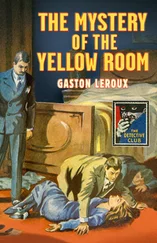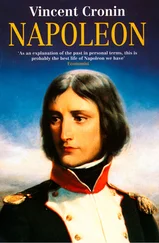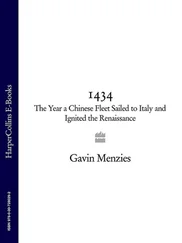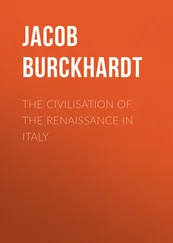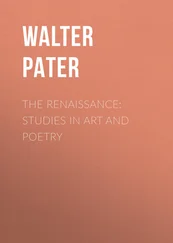1 ...7 8 9 11 12 13 ...21 Michelangelo left the two prisoners unfinished. Several explanations present themselves. He may have left them thus because the relief is more pronounced in unfinished work, or because there is a sense of movement, as though the form were striving to free itself from the block. Or he may have wished them to resemble certain antique statues, such as the Torso del Belvedere , which are more expressive when worn and truncated, or he may have intended to associate his figures, through the rough stone, with the cosmos. But if the prisoners are understood to express a temperamental dilemma that never was and never could be resolved, that perhaps provides the most satisfactory explanation of why they were left unfinished.
The tomb too was left unfinished, at least in the form Julius intended, so that later, after the Pope’s death, when lesser men whittled away the grand design, these prisoners were allowed no part in it and, like Julius himself in earlier life, went into exile in France. It was Julius however who commissioned them; they belong beside the Moses , and they remain the most moving testimony of all to the collaboration of a great artist and a great patron.
On 26 November 1507 Julius made one of his lightning pronouncements. He could not bear to live in the Appartamento Borgia any longer, continually reminded of ‘those Spaniards of cursed memory’ by Pinturicchio’s frescoes of Alexander VI, Lucrezia and the rest. He decided to move to four rooms on the second floor. At once he called in Perugino, Lorenzo Lotto and others to begin decorating the first of the Stanze , as they are called, and Raphael too when he arrived in Rome at the end of 1508. Perceiving the young man’s genius, Julius dismissed the other painters and entrusted the frescoes to Raphael alone.
Raffaello Sanzio was then aged just twenty-six, a slim man with a thin face, dark eyes, slender neck and delicate, probably consumptive, appearance. His sweet, equable character won him everyone’s affection. For many years he was in love with La Fornarina , the baker’s daughter whose large dark eyes and rather round face appear in many of his works, notably the Sistine Madonna , in which Julius is also portrayed; it was perhaps for love of her that he put off marriage to Cardinal da Bibbiena’s wealthy niece.
Julius imparted to Raphael his plan for the Stanze. He wished them to proclaim the absolute power of the Pope, spiritual as well as temporal, the spiritual power being exemplified in the doctrine of the real presence of God in the Blessed Sacrament. Julius had a particular devotion to the Eucharist—in 1508 he took the unusual step of joining the Confraternity of the Blessed Sacrament, a group of Romans who wished to honour God in the Eucharist by providing a torch-carrying escort whenever viaticum was carried to the sick. The Real Presence had been denied by the Bohemians when they separated themselves from Rome and by their theologians was currently under attack.
The Sistine Chapel had proclaimed the Incarnation as the fulfilment of pre-Christian striving, and the most important of the Stanze , the library, proclaims the Real Presence as the fulfilment or culmination of other kinds of truth. First, there is the truth of law, symbolized by the Pandects and the Decretals ; second, poetic truth, depicted under the form of Apollo and the Muses; third, philosophic truth, depicted in a fresco larger than the preceding two, known as The School of Athens. In a hall dominated by statues of Apollo and Pallas, symbolizing Reason, the philosophers of antiquity ponder, dispute and finally, in the persons of Plato and Aristotle, reach heights where agreement is possible. Opposite this fresco is one depicting the revealed truth of the Real Presence. Doctors of the Church, saints and popes down the centuries, even Julius’s favourite Dante, are shown paying tribute to the Blessed Sacrament exposed in a monstrance, above and converging on which are the Three Persons of the Trinity attended by the Blessed and by angels.
In the next room, his bedroom, Julius chose to state the truth of the Real Presence in terms of an actual historical incident. A certain Bohemian priest had doubts about transubstantiation; in order to try and overcome them he made a pilgrimage to Rome. On the way, at Bolsena, while celebrating Mass, he saw the host in his hand oozing blood. He tried to hide it in the corporal, but the blood seeped through, leaving a cross-shaped mark on the linen. Following on this miracle, the feast of Corpus Christi had been instituted, and the blood-stained corporal was preserved in Orvieto, where Julius had seen and venerated it.
In Raphael’s rendering of this dramatic scene a hundred years are bridged in order to show Julius at a prie-dieu watching the miracle take place. He is attended by Swiss guards in the handsome striped blue and orange uniforms he had commissioned Michelangelo to design for them. The mural is not only a beautiful and original composition: it is a notable attempt to arrest heresy with paint.
Raphael had arrived in Rome a somewhat languorous artist, and when he attempted to depict people in action as in the Deposition of 1507 he lapsed into a lymphatic formalism. But Julius’s Stanze are robust and vigorous. The School of Athens , in particular, is crowded with energetic figures, notably the portrait of Leonardo da Vinci as Plato. The aging Pope seems to have imparted to the younger man not only his vision of the underlying harmony of classical and Christian truth, but also some of his own unflagging energy.
Julius’s patronage extended also to architecture. In this field the Roman Emperors had been pre-eminent, and it was natural for a Pope who in some degree saw himself as their successor to engage as his architect an expert on the imperial style. This man—the third artist of genius employed by Julius—was Donato d’Angelo Lazzari, known as Bramante from his eagerness in seeking out commissions, bramare meaning to solicit. Born in Lombardy in 1444, Bramante was built like a wrestler, with a forceful muscular head and curly hair. Two little facts are known about him: he had a passion for pears and he liked giving supper parties at which he would entertain his friends by improvising on the lyre. However, like many a convivial Italian, Bramante saw himself as essentially sad and solitary, and wrote sonnets to proclaim the fact. He was a friend of Raphael, but did not get on with Michelangelo.
Julius commissioned Bramante to lay out the great garden mentioned earlier, which stretched from the Vatican proper to the thirteenth-century Belvedere villa 300 yards north, to enclose the garden with two long straight galleries, and to reconstruct the villa along the lines of the imperial Temple of Fortune at Palestrina. This reconstruction called for a two-storeyed façade, having for its centre a vast semi-circular niche with flanking walls of blind arcades, the whole being approached by a double ramp ascending in terraces. Although the full plan was never realized, enough was built to set a classical mark on the largely medieval Vatican Palace. The façade of the Belvedere villa was remodelled, and the gallery on the east side built—the other had to wait fifty years. Julius decorated the gallery’s open colonnades with frescoes representing the chief Italian cities—another example of his feeling for Italy as a whole—and in the courtyard of the Belvedere villa displayed his Apollo, the Laocoön and other works of classical sculpture.
The culmination of Julius’s life both as Pope and patron was the rebuilding of St Peter’s. The idea of a great new basilica, which had been shelved since the death of Nicholas V, naturally appealed to Julius. Not only was the old basilica decrepit, but on men who had come to appreciate the best imperial monuments, its style jarred, notably the vast atrium separating the entrance from the basilica proper, and the crude roof of open timber. Julius wanted a building which would, as he worded it in a bull, ‘embody the greatness of the present and the future’. This could be achieved of course only by turning to the greatness of the past.
Читать дальше






